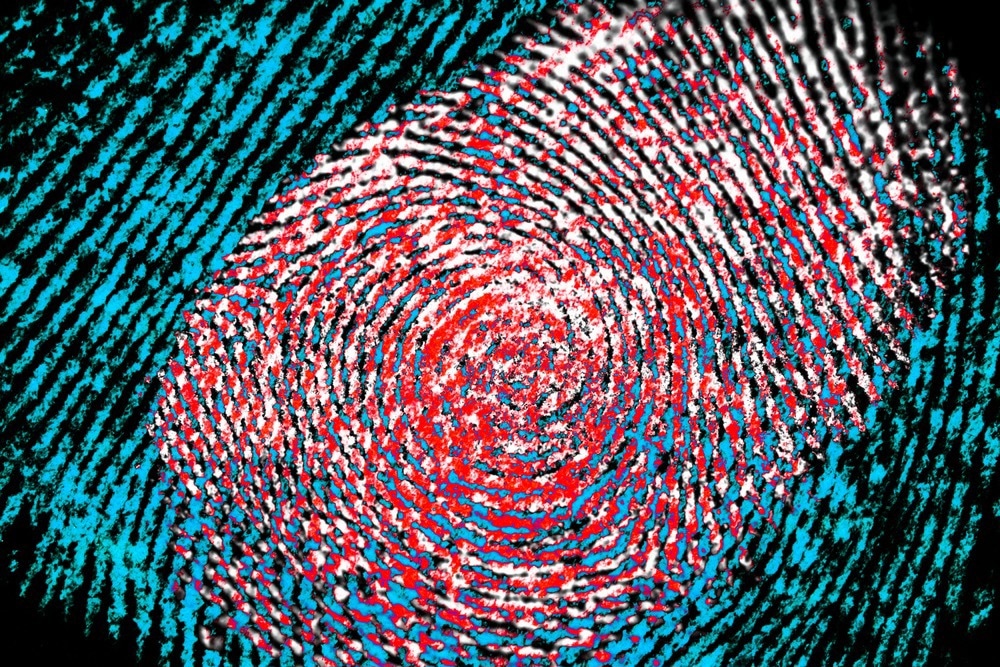Fingerprints are distinct to a person and determine their identity. Although various techniques have been developed to find latent forensic fingerprints, nanotechnology helped further advance the technique.

Study: Zinc oxide (ZnO) nanoparticles: Synthesis properties and their forensic applications in latent fingerprints development. Image Credit: Torsak Thammachote/Shutterstock.com
An article published in the journal Materials Today: Proceedings presented the synthesis of zinc oxide (ZnO) nanoparticles via a coprecipitation technique and applied the prepared ZnO nanoparticles for fingerprint development. The ZnO nanoparticles were prepared at 60 degrees Celsius using zinc chloride and sodium hydroxide.
The as-prepared ZnO nanoparticles were analyzed using scanning electron microscopy (SEM) and X-ray diffraction (XRD). The results revealed that the synthesized ZnO nanoparticles were less than 100 nanometers in size and had a cone-shaped morphology.
The ZnO nanoparticles were later applied in latent forensic fingerprint detection. The results revealed that the developed fingerprints yielded good results on porous, semi-porous, or nonporous surfaces. Thus, these powders can replace the commercially available powders used by forensic scientists.
Forensic Fingerprint Detection
Fingerprints are the gold standard for personal identification within the forensic community. Fingerprints are the patterns formed by the raised papillary ridges on fingertips, which contain rows of pores that connect to sweat glands.
These ridges, which are formed during the first few months of fetal life, not only remain immutable during their lifetime but, after death, seem to have the peculiar property of outlasting every other recognizable feature of the body.
Powder materials are often used in the field of forensic fingerprint detection. These materials cling to the remnants of fingerprints, distinguishing between background surface and fingerprint features. The development of fingerprints on dry and nonporous surfaces requires powder dusting, which entails the application of a finely divided mixture on fingerprint traces followed by brushing and blowing away excess powder.
Compared to large and coarse particles, small fine particles stick better to each other. However, no single powder formulation was reported to detect latent fingerprints on all types of surfaces. Procedures adopted for fingerprint detection depend on the surface type (porous/semi-porous/nonporous), type of secretions (eccrine/sebaceous), fingerprint age, moisture content, and other factors.
The replacement of conventional technologies with nanotechnology led to vast development in the scientific field. Various structural forms of ZnO nanostructures (nanotubes, nano cables, nanorods, and nanowires) were studied for their industrial applications. The wurtzite structure of ZnO in its hexagonal unit cell makes it an II-VI inorganic compound semiconductor. Additionally, due to the broad bandgap and high exciton binding energy, ZnO is considered a superior semiconductor.
ZnO Nanoparticles for Forensic Applications
ZnO nanostructures are extensively used in industrial applications. The physical properties of ZnO nanoparticles, including conductivity, refractive index, and luminescence, are influenced by their large optical bandgap.
In the present work, the ZnO nanoparticles were prepared from zinc chloride and sodium hydroxide at 60 degrees Celcius via a one-step coprecipitation method resulting in hexagonal-shaped ZnO tube-like microstructures followed by their enhancement using silver (Ag) nanoparticles. This process was devoid of surfactant or reducing agents.
The prepared ZnO nanoparticles were tested for detecting hydrogen, carbon monoxide, and carbon dioxide at different temperature ranges and compared with bare ZnO and Ag/ZnO sensors. The results revealed that Ag mixed ZnO nanoparticles considerably enhanced the gas sensing characteristics. At 300 parts per million, Ag/ZnO nanoparticles showed 479 percent concentration.
The development of forensic fingerprints using prepared ZnO nanoparticles was suitable for different surface types (porous/semi-porous/nonporous). Thus, the replacement of conventional powders with ZnO nanoparticles powder for fingerprint development was demonstrated through the present study.
Limitations of the Developed Powder
Besides the advantages mentioned above, the developed powder for forensic fingerprint visualization was unsuitable for non-contrasting surfaces. Despite the small size of the nanoparticles in the developed powder, it has better adherence to the surface compared to other commercially available powders. On the other hand, the high adherence ability of developed powder could cause smudging on the surface even with slight moisture content.
Moreover, the developed powder was not analyzed for fluorescent properties, as reported in previous studies that mentioned the variable fluorescence of ZnO nanoparticles. The fluorescent properties of fluorescent powders could be useful in forensic fingerprint development for surfaces involving writing and printing that are not visible to the naked eye.
Conclusion
To summarize, the synthesized ZnO nanoparticles were applied to create latent fingerprints. Due to their cost-effective synthesis and no occupational dangers, ZnO nanoparticles are advantageous over commercially available powders in forensic fingerprint development.
Thus, the suggested approach using ZnO nanoparticles was suitable for developing latent fingerprints on dry and wet surfaces, which are employable at crime scenes or in the laboratory. It is a cost-effective and inexpensive method.
Through the present work, the replacement of current toxic powders with nanopowders was demonstrated for latent fingerprint detection in forensic science. Due to the affordability and efficiency of nanoparticles, nanopowders are considered cost-effective alternatives to conventional powders.
Reference
Verma, R.K et al. (2022). Zinc oxide (ZnO) Nanoparticles: Synthesis Properties and their Forensic Applications in Latent Fingerprints Development. Materials Today: Proceedings. https://www.sciencedirect.com/science/article/pii/S2214785322052282
Disclaimer: The views expressed here are those of the author expressed in their private capacity and do not necessarily represent the views of AZoM.com Limited T/A AZoNetwork the owner and operator of this website. This disclaimer forms part of the Terms and conditions of use of this website.